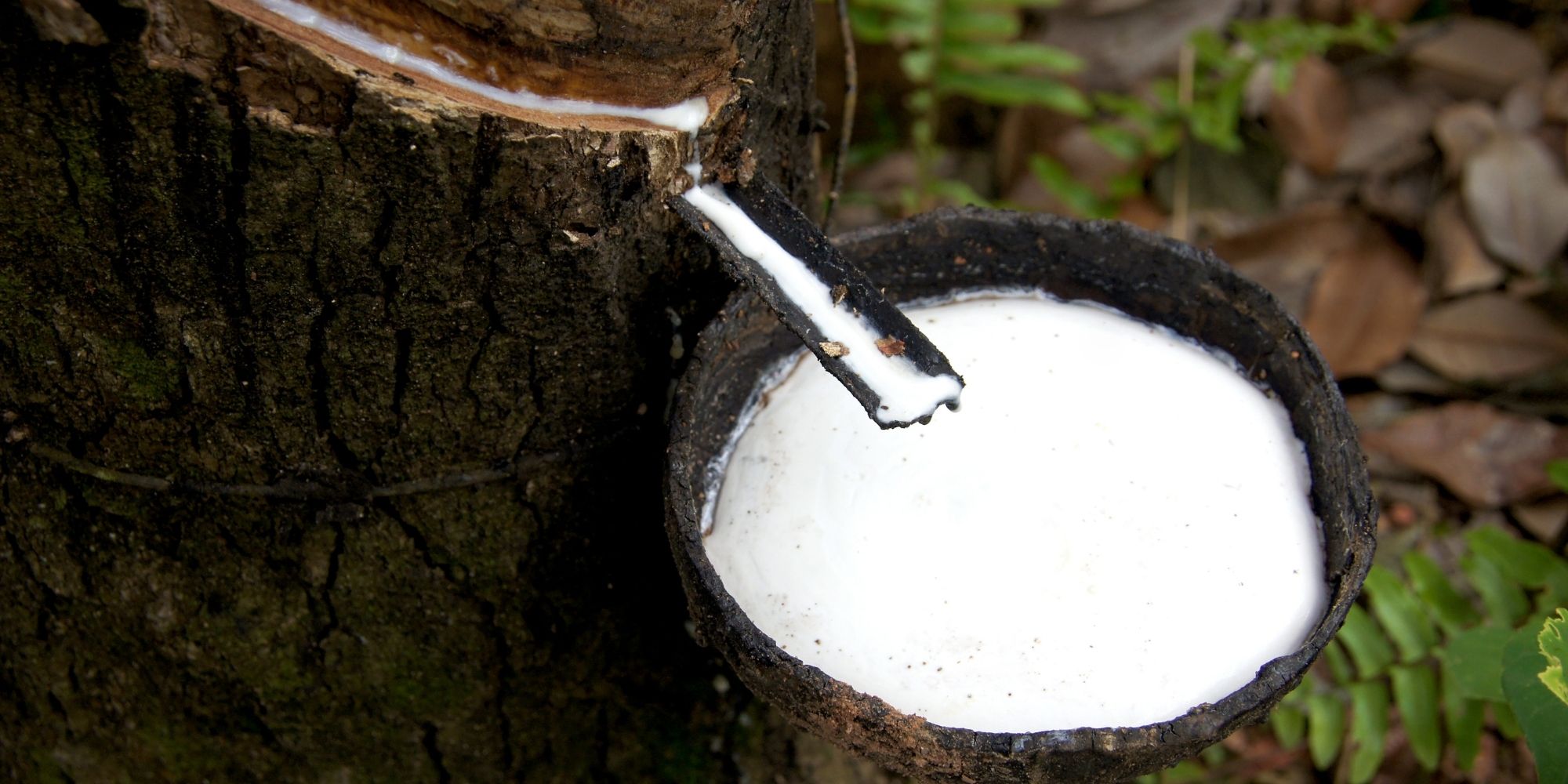For many years, latex-backed artificial grass was the only option on the market. Because it was the only choice, the benefits and disadvantages of latex were simply accepted. But recently, polyurethane or PU backed grass has gained popularity. What is the difference between polyurethane and latex backed artificial grass, you may be asking? First, it’s important to understand more about the two materials. And we must mention that both kinds have a primary backing made of nonwoven textile, usually polypropylene. Polyurethane or latex backing serves as a secondary backing for all good quality artificial turfs.
What is latex?
It’s surprisingly a natural material (although there are new synthetic options available). It’s made, most commonly, from rubber trees in South America and Southeast Asia. It’s harvested by stripping off slices of bark and collecting the sap in cups, similar to maple syrup. This sap is then processed and vulcanised. Synthetic latex is made from petroleum-based sources. Both versions are extremely resilient (especially to low temperatures) and stretchy. When used on artificial grass as a backing, it’s a dull black in colour.
What is polyurethane or PU?
Polyurethane was created in the 1930s by Professor Dr Otto Bayer and since its invention, numerous variants now exist. At its core, polyurethane or PU is plastic, but the many different varieties can see it resemble foam, flexible or rigid forms. According to Made How, “While polyurethane polymers are used for a vast array of applications, their production method can be broken into three distinct phases. First, the bulk polymer product is made. Next, the polymer is exposed to various processing steps. Finally, the polymer is transformed into its final product and shipped.” When used as a backing for artificial grass, PU is shiny black in colour.
What are the pros and cons of each as artificial grass backings?
While latex was popular for decades, it has some distinct disbenefits. Latex is a natural substance which means people and animals can become allergic to it. Even dogs and cats can have latex allergies, so it’s important to speak to your vet before installing a latex-based artificial grass turf. Next, latex breathes during very hot weather. This can cause it to bubble or wrinkle. While it will return to normal in colder weather, it does mean your lawn may look unsightly for a few days. Lastly, without proper cleaning, latex can absorb smells. Most worryingly, cat or dog urine. As the urine crystallises, the latex takes on the smell which can prove difficult to remove. Thankfully, polyurethane doesn’t have these same issues. However, you will need to clean your artificial grass regularly (even if you have PU-backed grass) simply for hygiene reasons. Provided you, your family and your pets have no allergies and live in a temperate climate; latex can still prove a great option.
The difference in permeability is in the low percentages i.e. 4% with regard to latex holding trapped smells in comparison to a non-latex product.
